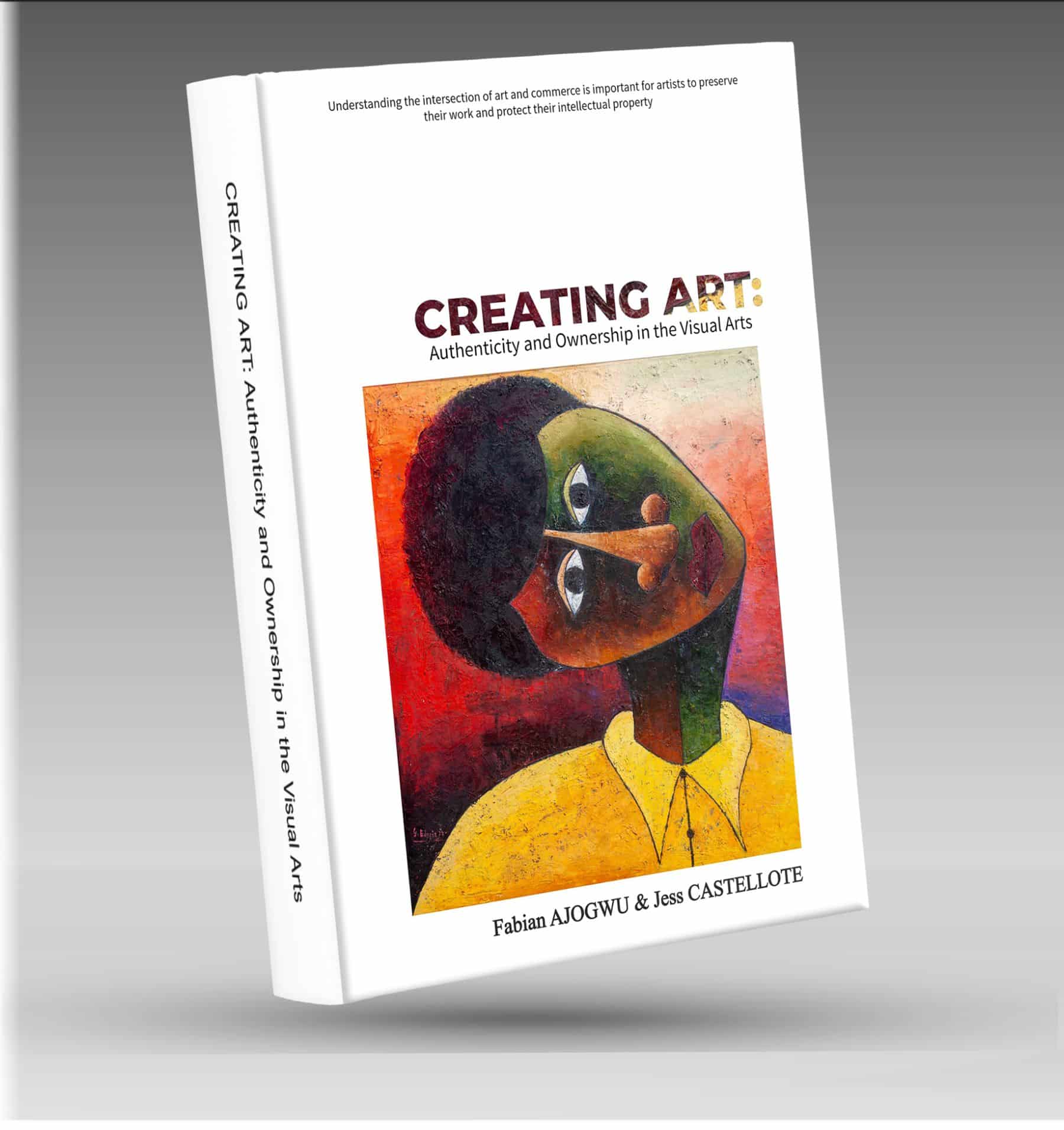In our latest endeavor, “Creating Art,” we explore the legal and contractual issues of the visual arts. As authors, we are glad to continue our journey, building upon the foundation laid by our previous work, “Collecting Art,” published three years ago, a book aimed at providing useful insights and helping collectors navigate the complex world of art acquisition, documentation, and storage.
We hope it has proven useful to readers, equipping them with knowledgé and guidance to enhance their collecting practices. Building upon the themes, ideas, and principles proposed in “Collecting Art,” our focus has now shifted to the critical topics of copyright, authenticity, ownership, and fraud within the visual arts. Gyr subtitle, “Authenticity and Ownership in the Visual Arts, reflekour ongoing commitment to address the complexities inherent in these issues.
Throughout history, the dichotomy between art and commerce has been a subject of debate within the art community. A perceived idea in the art community is that commercialization pollutes art, and art is not meant to be a commodity. “Art should be created for art’s sake” – taken from the French, the term “l’art pour l’art” (Art for Art’s Sake) expresses the idea that art has an inherent value independent of its subject matter, or of any social,political, or ethical significance. Benjamin Constant, however, takes the view that ‘art for art’s sake, with no purpose, for any purpose perverts art, but art achieves a purpose which is not its own? Picasso puts it succinctly – “art for art’s sake is a hoax.”
Art and business are viewed dichotomously. Artists face a dilemma between creating for art or creating to earn a living (while remaining true to their art). As creatives, visual artists focus on expressing their creativity rather than commercialising their work. The romanticised notion of the “starving artist” has persisted throughout history, with celebrated artists like Vincent van Gogh epitomising the archetype of it. Despite his undeniable talents, he endured much financial turmoil and only garnered fame and recognition for his artworks posthumously. The perception of the starving artist is also linked to the bohemian lifestyle in the 19th century. Bohemians believed that art should be created for the sake of greater creative exploration and self-expression rather than commercial purposes.
However, in today’s world, understanding the intersection of art and commerce is important for artists to preserve their work. The success of an artist is dependent on the uniqueness of their work, and this uniqueness or originality is what intellectual property rights protect. In the art world, intellectual property rights protect the originality and creative expression of artists by providing legal safeguards that protect their work against unauthorised reproduction and distribution. In addition, the journey towards artists generating revenue from their creations begins with their understanding and exploitation of intellectual property rights. For artists, their creations are not just an instrument of artistic expression, but also a possible source of income and recognition.
“Creating Arts” is a book on legal and contractual issues in the visual arts. As authors, we embarked on this journey with a clear understanding of the vital importance of authenticity and-ownership within the realm of visual arts. Our subtitle, “Authenticity and Ownership in the Visual Arts,” captures the core themes we aimed to explore and elucidate throughout these pages. In the contemporary art world, copyright remains a cornerstone issue affecting every participant, from artists to intermediaries to collectors. Understanding its nuances and implications is crucial for navigating the intricacies of this dynamic landscape.
This book aims to demystify copyright law and provide practical insights to facilitate useful knowledge to actors across the art spectrum. In tandem with copyright, the concept of authenticity has emerged as a pivotal concern, particularly considering the increasing prominence of digital arts. As the boundaries between physical and digital art blur, it becomes more necess than ever to address the legal and contractual complexities inherent in this evolving landscape.
Our endeavour is to offer an overview of these issues, equipping readers with the tools to navigate this shifting terrain confidently. What is considered art has evolved since the times of cave drawings. With the evolution of man and technology, different methods of creating art and protecting the rights of the creator or owner of such art have also come. Intellectual property rights remain essential in the ever-evolving landscape of the art world, where creativity and innovation intersect with commerce and cultural appreciation. This book serves as a comprehensive guide, addressing the needs of both visual artists and art owners, empowering them with the knowledge and tools necessary to navigate the complex realm of intellectual property rights and protection.
Within the pages of this book, we explore the fundamental principles of intellectual property, focusing primarily on copyright and trademarks and their application to the visual arts. By examining real-life case studies and providing practical examples, we aim to demystify legal concepts and equip readers with a clear understanding of securing and enforcing their intellectual property rights effectively.
Moreover, we delve into artists’ and art owners’ economic and moral rights. Economic rights encompass the ability to control and benefit from the commercial exploitation of their works, including reproduction, distribution, and public display. On the other hand, moral rights protect the artist’s integrity and reputation, allowing them to assert authorship and object to any modifications or distortions that may harm their artistic vision.
Furthermore, we explore the evolving landscape of the art market, where digital technologies and online platforms have transformed how art is created, shared, and consumed We discuss the implications of these developments on both artists and art owners, addressing issues such as digital rights management, licensing, authentication, and the protection of art in the digital sphere.
During the process of writing this book and in the years following its publication, we have observed a pervasive lack of practical knowledge regarding suitable contracts for art transactions.
This realisation underscored the necessity of addressing this gap, as artists, intermediaries, and collectors often navigate contractual negotiations without adequate guidance. Through our exploration of various contract types and their applicability, we aspire to empower readers with the requisite understanding to navigate contractual arrangements effectively.
We are aware of the growing significance of resale royalty rights within the global visual art landscape. As the dynamics of the art market continue to evolve, understanding and advocating for fair compensation for artists work is paramount. By shedding light on the intricacies of resale royalty rights, we want to contribute to a fairer and more equitable art ecosystem.
We believe equipping artists and art owners with the necessary knowledge and tools can foster an environment that respects and values their creative contributions. We encourage readers to embrace a proactive approach to intellectual property rights, enabling them to assert their rights, negotiate fair contracts, and engage in mutually beneficial collaborations.
While this book provides valuable insights, it is essential to note that it does not constitute legal advice specific to individual circumstances. We encourage readers to seek legal counsel when faced with complex legal matters.
We embark on this journey of discovery, exploring the rights of visual artists and art owners and the ways of protecting them. By understanding and navigating the intricate landscape of intellectual property, we can foster an art world that celebrates creativity and respects and upholds the economic and moral rights of those who bring beauty and inspiration to our lives.
Looking ahead, we are excited to announce that we are already planning a third
Jok in the series.
In this forthcoming instalment, we will look at the complex issue of the “value” of art, exploring the many factors that influence perceptions of worth within the art world.
We extend our gratitude to our readers for embarking on this continued journey with us. It is our sincere hope that “Creating Art” will serve as a valuable resource, allowing individuals within the visual arts community to navigate legal and contractual challenges with confidence and clarity.
Professor Fabian AJOGWU, OFR, SAN
Nwanapa’s View, Nsukka
June 23, 2024
Dr Jess CASTELLOTE
Victoria Island, Lagos
June 23, 2024
I am truly humbled but feel highly honoured and delighted to have been asked by my two bosom friends to write the Foreword to this pace-setting book, Creating Art: Authenticity and Ownership in the Visual Arts. This very thoughtful book is the second collaboration between Professor Fabian Ajogwu SAN and Dr. Jess Castellote in advancing knowledge in the field of visual arts. Visual artists need to be proactive in preserving their copyright, to “exclude all others,” and to prevent unauthorised reproduction, distribution, or adaptation of their creations. In this digital age especially, where artworks be easily reproduced and shared online without proper credit or compensation, it becomes increasingly important to have a thorough understanding of intellectual property rights.
Visual artists would be empowered to enforce their rights against • infringement and also explore various income opportunities through licensing and other means. The concept of fair use must also be understood in order to restrict the use of copyrighted work, even for purposes such as satire, criticism, and commentary.
Visual artists who have a thorough understanding of all intellectual property laws in relation to their works can confidently negotiate fair compensation for their work while maintaining creative integrity. Monetary aspect aside, the right of attribution is also essential to the artist. It is the right of an artist in their work that ensures they are appropriately credited for their work whenever it is used and also controls the way the work is used and displayed. The protection of the intellectual property rights in your work is vital. Your work is invaluable and worth the extra effort to ensure it is protected under the law.
This book, aptly titled “Creating Art,” provides guidance for both visual artists and art owners. It dissects the legal frameworks that are beneficial to the art world, navigatingfrom the understanding of the fundamentals of intellectual property rights to exploring practical strategies to secure and enforce these rights. This book also recognises the mutually beneficial connection between creativity and commerce, wherein artistic expressions intersect with economic imperatives.
In this ever-evolving digital age and its impact on online media, it is pertinent to discuss the implications on the production, distribution, and consumption of Art. This book examines the opportunities and challenges brought about by technological advancement and how to ensure your Art is still safeguarded in this digital age.
The authors have continued to show their mastery of the intricate world of Art and the process of Creating Art. In their pioneering work, “Collecting Art”, they did a grand exposé of collecting Art, and with this publication, “Creating Art”, they seem to lay out an intellectual series on the subject of Art. I congratulate the authors on their work. I commend the book to all who are interested in understanding the world of Art, the visual artist and issues of authenticity in Art.
I hope this book can serve as a valuable resource as you create, own, support, or seek to understand Art.
Igwe Alfred Nnaemeka ACHEBE, CFR
Obi of Onitsha (Agbogidi)
Obi of Onitsha palace, Onitsha
June 23, 2024



